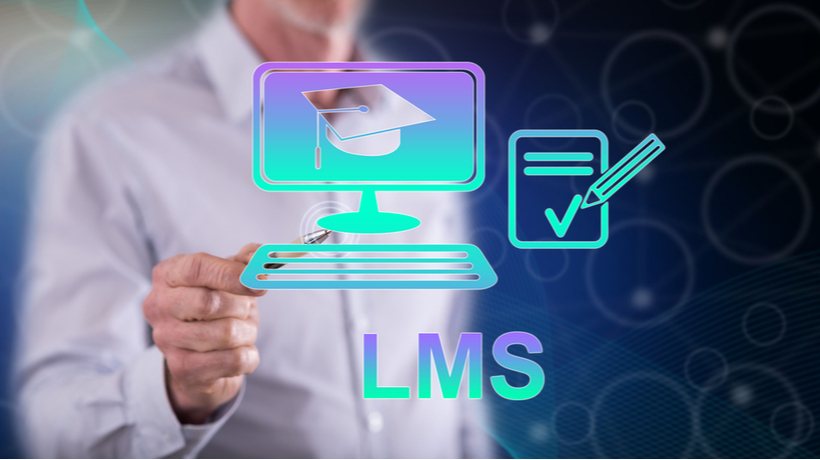6 Tips To Choose The Right LMS For Nonprofits
A lot of us assume nonprofit means non-income-earning, but that’s not the case at all. If anything, non-governmental organizations (NGOs) and community-based organizations (CBOs) need more cash than commercial corporations. Their activities and causes are expensive, and they have to be paid for somehow. This often involves creative revenue schemes, sustainable money generators, and optimal cost-cutting. Ideally, all this should be done without downgrading the quality of products or services. How does the right LMS for nonprofits facilitate this? And how do you select a system that scales with your evolving needs?
1. Re-Evaluate Your Objectives And Goals
Running nonprofits isn’t as straightforward as it seems. It starts out simply enough. You see a problem, you want to fix it, and you start a company to do so. But once you recognize the scope and logistics involved, you realize it will cost a lot more than you expected. You also notice how hard it is to find funds. Donations only go so far, and even those are difficult to access. Willing people don’t know where to contribute. The numbers game can be tricky as well. You might therefore need to rethink your organizational targets, and how eLearning fits into them.
2. Maximize Your Connection
There are lots of donors but they might only afford small amounts (of time and money). Larger donations from “angel investors” are rare, and there’s no shortcut to channeling them your way. This may mean you need to reassess your financial targets. Can you narrow your scope for impact or broaden your field of influence for better results? Which activities can be digitized to cut costs and extend reach? For instance, you could use the LMS to generate donor outreach. So, ensure your LMS for NGO has tools for content creation and dispersion.
3. Plan For Future Growth
Nonprofit founders are born idealists, so they may not always see the full picture. You start out with, “The kids in this neighborhood aren’t receiving enough education. Let’s open a school!” Then you may focus on announcing the school to kids and neighbors, sourcing books, picking a name, and designing uniforms. You might not dwell on long-term aspects like grade level, tertiary training, or how the teachers will get paid. Investing in LMS can help with future plans. You can storyboard targets, structure curriculums, and interact with peers in the nonprofit education sector. Also, ensure the LMS itself can support all your programs (e.g., school timetables, student portals, certification, teacher training, mentorship for parents, etc.).
4. Opt For LMS With Varying Packages
The size and shape of your nonprofit will shift over time. It’s not just about user numbers. You might restructure it or model it for multiple locations. You may need to incorporate new approaches or phase out older ones. You don’t want to have to buy a new nonprofit LMS each time you rebrand. Instead, look at an LMS series that offers versatility. At this point, you should have a five-year plan in place. So, you have some idea of what may shrink or expand. Look for a brand that can accommodate those tweaks and adjustments. That way, it’s easier to upsell or downgrade as needed. It could be a basic package you can scale up and down, or it could be several curated feature packs.
5. Look Into The Vendor’s Support Services
Regardless of your team’s experience or available resources, you may need help from time to time. Vendor support services improve tool functionality so that you get the most from your investment—now and in the future. Look at which support options they provide and if that’s included in the base cost. If not, it may be more cost-effective to add their advanced support services if your team is inexperienced. For example, you can reach the vendor 24/7 via phone or take advantage of their live chat support. If you do need to scale up or back, they can guide you through the process, or even make recommendations about add-ons or upgrades that may be worth the investment.
6. Consider Different Licensing Options
There are LMSs for nonprofits that are “free,” and may or may not require an annual license. You can get a non-licensed or open-source platform, but the cost usually comes in the form of technical expertise. Programming and configuring them often requires high levels of code. And these IT pros have pretty high per-hour billing. Still, as a nonprofit, you might have in-house volunteers that possess the necessary skill. This drastically cuts down your IT budget because you get both the app and the labor to run...for free! But before you make this decision, talk to your techie volunteers. You want to get LMS you can already manage rather than embracing the platform, then struggling to find someone who can run it. Especially when you want them to do it pro bono.
Conclusion
Getting LMS for nonprofits isn’t the same as buying one for commercial organizations. Yes, you still want to save money while obtaining the best features. But with lowered access to capital, the stakes are higher. Sometimes, it could literally be life or death. So, what suggestions can help you secure the right software? Reassess goals and objectives. You want a way to run the organization and reach potential contributors, so focusing on LMS can do both. Find a versatile LMS series that allows you to switch around if you need to. And where possible, get free open-source LMS, especially if you have IT volunteers to operate the software for you.
Get our guide for tips on how to choose the best LMS for nonprofits and stretch your budget. Or start your search right now using our LMS directory to choose a tool that meets your needs. You can even read reviews to see which platform exceeds expectations based on your specific use case.






